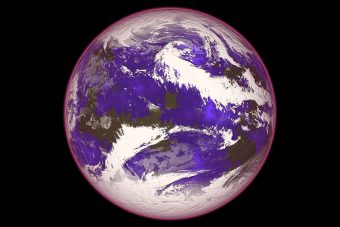
The World Meteorological Organization joins the rest of the international community in marking World Ozone Day on 16 September. It highlights the importance of safeguarding the Earth’s protective ozone layer and shows that collective action, guided by science, is the best way to solve major global challenges.
The ozone layer in the upper atmosphere blocks ultraviolet (UV) radiation that harms living tissue, including humans and plants. The ozone “hole,” which was discovered in 1985 is the result of human emited chlorofluorocarbons (CFCs), which are ozone-depleting chemicals and greenhouse gases used as coolants in refrigerators and in aerosol spray. Nearly 200 countries signed the Montreal Protocol in 1987, which phased out the production and consumption of CFCs.
A new study in Nature demonstrates that by protecting the ozone layer, which blocks harmful UV radiation, the Montreal Protocol also protects plants and their ability to pull carbon from the atmosphere.
“The Montreal Protocol began life as a mechanism to protect and heal the ozone layer. It has done its job well over the past three decades. The ozone layer is on the road to recovery. The cooperation we have seen under the Montreal Protocol is exactly what is needed now to take on climate change, an equally existential threat to our societies,” said UN Secretary-General Antonio Guterres in a message.
More:
The most recent WMO /UN Environment Programme Scientific Assessment of Ozone Depletion, issued in 2018, concluded that the measures under the protocol will lead to the ozone layer on the path of recovery and to potential return of the ozone in the Arctic and Northern Hemisphere mid-latitude ozone before the middle of the century (~2035) followed by the Southern Hemisphere mid-latitude around mid-century, and Antarctic region by 2060 .
Although the use of halons and chlorofluorocarbons has been discontinued, they will remain in the atmosphere for many decades. Even if there were no new emissions, there is still more than enough chlorine and bromine present in the atmosphere to destroy ozone at certain altitudes over Antarctica from August to December. The formation of the ozone hole is still expected to be an annual spring event. Its size and depth are governed to a large degree by the meteorological conditions particular for the year.
As of the first week of August 2021, the ozone hole reappeared and is rapidly growing and has extended to 23 million square kilometers on 13 September which is above the average since the mid 1980s. The lowest ozone value in the during this seasons was around 140 DU. The hole fluctuates in size annually and it usually reaches its largest area during the coldest months in the southern hemisphere, from late September to early October.
You can read the whole article here.
Source: WMO



